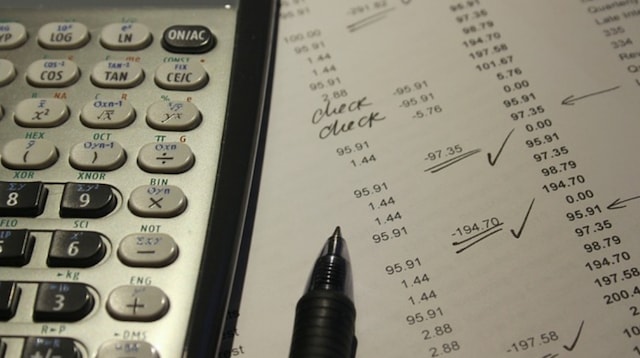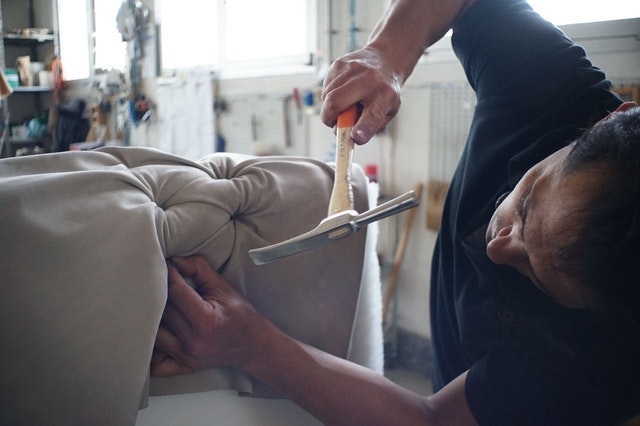Businesses take out loans for many different reasons, but it’s important to do your homework and make sure you get the financing that’s right for you. Our easy guide shows you all you need to know, including where to find the best small business loans and how to boost your chances of being approved.
3-step business loan checklist
Locating available loans and applying for them can be a time-consuming process. Here’s how to do it right:
- Get your business finance documents in order.
- Do some digging to get the best loan for you.
- Don’t get trapped by the Terms and Conditions.
If you’re financing equipment, keep reading for a few tips on making the best decision there.
1. Get your business finance documents in order
With the strict lending criteria in place now, it’s essential that you get your head around your business documents before you even think about applying. The first step is to craft a solid business plan that outlines:
- The details of your business (location, legal structure, etc.)
- Competitor and market analysis
- Any marketing plans you have
Applying for business finance can be a long, drawn-out process of research, collating information, applying and waiting for the banks to get back to you. This can mean the difference between winning and losing on big projects that need someone ready to jump in straight away.
Speed up the process by staying on top of your business figures so you’re ready to put your hand up when opportunity comes knocking.

Taking the time to work with a bookkeeper or accountant to craft a solid cash-flow prediction and budget will help you work out the cost-benefit scenarios for different loans.
For example, if you get the loan and sales go up, and you need to take on extra staff — how will that affect your bottom line? Having these examples thought out will show lenders that you’ve done your homework.
Related: The essential guide to mastering your business finances
2. Do some digging to get the best loan for you
Most small business loans are either for large equipment or startup purchases, or to help with short term cash-flow issues.
When choosing how much you should borrow, you need to consider:
- How much you can afford to pay back monthly
- How long you will need to pay it back
- The terms of the loan
This might mean opening a line of credit to help with cash flow issues, rather than a standard loan.
Your borrowing capacity is roughly equal to 10% of your annual revenue.
So, if you’re currently bringing in $100,000 per year, you’ll be able to borrow $10,000. This is to protect you, so you’re not spending too much of your income on loan repayments. It also protects the lender by reducing the risks of you defaulting on the loan.
Pro tip: There are a lot of online calculators that will help you compare interest rates, see if you’re better to lease or buy equipment and how much your loan will cost in total.
Alternative lenders are opening the loan market
Although banks have a monopoly on the business loan market, there are a lot of new players emerging. These new financers may seem attractive, as some offer:
- Lower introductory fees and interest rates
- Fewer documents required
- A willingness to take on higher-risk loans than the banks
However those easy-to-get loans can come with high costs after the honeymoon period, and sneaky advertisements that can hide actual interest rates as ‘fees’ of up to 38% per annum.
A better option: government business loans

When small businesses thrive, everyone wins. So the government is invested in helping small businesses get off the ground through a range of grants and government business loans.
Government loans often have different lending criteria and offer low or no interest, with flexible repayment terms.
While they often favour businesses that are innovating in high-demand areas such as environmental or STEM (science, technology, engineering, math), there are lots of options for small businesses.
To find a loan or grant for your business, look at both federal and state levels of government, as well as industry bodies in your field, or emerging areas (such as green business, research and development and trades).
3. Don’t get trapped by the Terms and Conditions
Before signing a loan contract, it’s important to be aware of any clauses that might affect your business or future borrowing capacity. Look for default clauses buried in the fine print that:
- Allow the bank to demand you repay the loan all at once if you miss a payment
- Tell you what you can and cannot do with secured property
- List ongoing maintenance and repair costs, annual fees or charges that you’ll need to pay on top of the loan payments
Online tools, such as this one at InfoChoice make it easy to compare the features of different loans. Just keep looking until you find the loan with the best terms.
The risks of secured business loans
Startups that don’t have an established record of income will need to provide the lender with some security that their investment is safe. Research from the Reserve Bank found that banks almost always require real estate as collateral for the loan. This can feel like a big risk because if your business fails, not only would you lose your source of income but your family home with it.
Some important things to consider before signing a secured business loan:
- Realistically looking at your ability to pay the loan back
- Backup sources of income if things change in your industry
- The likelihood of needing another loan down the track, even for a credit card or car loan (if all your property is pledged as security on a small business loan)
Having your house as collateral for a loan might lead to a double hit of financial pressure if the economy affects your business at the same time as the housing markets drop further, or interest rates rise.
Equipment finance — loan or lease?
When it comes to adding or upgrading business equipment or vehicles, you may be offered either a loan or lease arrangement.
When a loan makes sense

Loans are favoured when the equipment has a longer life cycle and will outlast the loan term.
Just know that when you borrow money to buy a vehicle or equipment, it may be used as security for the loan. So the vehicle or equipment could be repossessed if you don’t pay back your loan according to the terms and conditions.
When a lease is a better choice
If you’re looking at technology and equipment that is constantly being improved, then a lease may work better than owning. This allows you to pay a smaller fee each month to lease the equipment, with the option at the end of the term to either buy out, or upgrade to newer versions with a new lease term.
While both options will work out to be more expensive than buying with your own money, you’ll need to weigh up whether the cash-flow advantages of a lease outweigh the freedom of owning the vehicle or equipment outright. Again, an accountant can help you weigh your options.
Small business loans can boost your business
Whether you need money to get you through a downturn or to buy equipment to service a new contract, a business loan can take the pressure off and help you get ahead.
When looking at your options, remember to:
- Have a strong handle on your business finances first
- Make sure you’re aware of all the terms and conditions
- Consider government business loans
Finally, keep on top of payments as the loan term progresses so that you can keep your business moving in the right direction.
The information contained in this blog post is provided for informational purposes only, and should not be construed as an endorsement or advice from GoDaddy on any subject matter.





